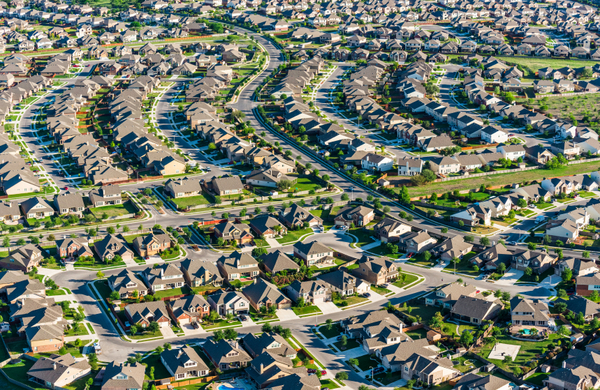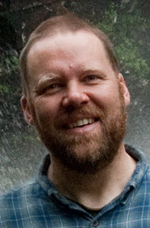 Researchers say they looked at the combined effects of land use decisions and climate change because, while there are many studies of each, the two factors need to be examined together.
Researchers say they looked at the combined effects of land use decisions and climate change because, while there are many studies of each, the two factors need to be examined together.
As climate change alters habitats for birds and bees and everything in between, so too does the way humans decide to use land. Researchers at the University of Wisconsin-Madison and Aarhus University in Denmark have, for the first time, found a way to determine the potential combined impacts of both climate and land-use change on plants, animals and ecosystems across the country.
The study, which looks at estimates of climate and land-use change speeds, is from Jack Williams, UW-Madison professor of geography; Volker Radeloff, UW-Madison associate professor in the Department of Forest and Wildlife Ecology; and postdoctoral researchers Alejandro Ordonez, from Aarhus University and UW-Madison, and Sebastian Martinuz, of UW-Madison. It was published today (Aug. 18, 2014) in the journal Nature Climate Change.

The estimates — relevant to the first 50 years of the 21st century — provide a basis for national, regional and local policy discussions about how to conserve biodiversity and ecosystems in a rapidly changing world. Combining climate and land-use change, the researchers say, may lead to different actions than consideration of either alone.
“For conservation, as the world is changing, we want to know, how will wildlife respond,” Radeloff says. “We need to take both land use and climate into account as we look at the future.”

For example, flat areas of the Midwest are more vulnerable to climate change than mountainous regions of the country. Conversely, areas in the northeastern U.S. may experience more intensive rates of land use. High demand for cropland in New England would lead to greater destruction of forest, while, in the upper Midwest, it would lead to slower growth of cities.
The analyses thus show different impacts for different regions. Regions exposed to high climate change rates and reductions in habitat due to more rapid land-use change may be higher priority for policy efforts than other areas. In some regions, such as the Great Plains, high rates of land-use change may actually lead to increased forest cover.
“There are lots of studies that look at climate change and a lot of studies that look at land-use change, but very few quantitatively integrate the two together,” says Williams, who is also director of the Center for Climatic Research in the UW-Madison Nelson Institute for Environmental Studies.
In their approach, the researchers used the Intergovernmental Panel on Climate Change 5th Assessment Report and socioeconomic parameters from the U.S. Natural Resources Inventory to create scenarios that looked at the rate of change of both climate and land use, referred to as the speed of climate and land-use change. The land-use scenarios came from models previously developed by Radeloff and his team in 2012.
For climate, this meant looking at changes in variables like precipitation, water deficit, and temperature. For land use, it meant assessing changes to housing prices, agricultural taxes, carbon subsidies and more.
The speed of climate change in a particular place matters because it determines how quickly a given species of plant or animal must migrate from one region to another to stay within its optimal climate, or how quickly it must adapt to new conditions. Similarly, land-use speeds measure how quickly land cover changes, which can lead to new or lost habitat, species isolation, or barriers to species entering or leaving an area.
The combined scenarios are not, Williams and Radeloff say, meant to advise policymakers what to do, but rather, to show what is likely given specific changes to policy in the context of a changing climate and changing land.
It’s not “what’s going to happen, but a range of what might be likely,” says Radeloff. “If we change these policies, this is what’s likely to happen.”
The team found that, overall, climate change has an order of magnitude more impact than land use, but the relative impact of both differs by region.
“Across the U.S., the rates of climate change are a big deal,” says Williams. “If we are thinking about land use and conservation planning, these results put both into perspective.”
The researchers joined forces across fields because they say the sweep of global change requires coordinated research. Change is inevitable, they say, but humans have the chance to mitigate their impact in ways that give the world’s wildlife a chance to thrive.
“We won’t stop climate change but maybe we can slow it … we may be able to give species time to adapt,” says Radeloff. “Now we have geese living on golf courses, but Aldo Leopold was worried they were going to go extinct. That’s probably not going to happen.”
The work was supported by the Bryson Climate, People and Environment Program; the HISTFUNC project; the National Science Foundation; and NASA’s Land Cover and Land Use Change Program.



